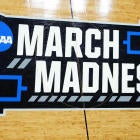 |
| Why shouldn't we do away with transfers waivers altogether? (AP) |
Transfer waivers have gotten out of hand over the last couple of years. There's seemingly no consistency from case to case -- and the numbers of men's basketball players granted hardship waivers has spiked of late.
Now the NCAA has modified the guidelines.
What they should have done was eliminate the transfer waiver altogether. The bottom line is this: If you've got a sick family member and need to go back closer to home, that's fine. If it's that serious, then take the year off from basketball and do whatever you can to take care of them. Don't worry about basketball; worry about your mother, father, brother or sister.
Instead, the guidelines as announced last Friday are as follows for those who want to return closer to home due to illness of an immediate family member:
- The school presents medical documentation of a debilitating injury or illness to a student-athlete’s immediate family member that is debilitating and requires ongoing medical care. The previous standard had been “life-threatening.”
- The student-athlete demonstrates he or she will be responsible for regular, ongoing caregiving responsibilities. The previous standard required the student-athlete to be the primary, day-to-day caregiver.
- The school is within a 100-mile radius of the immediate family member’s home, which demonstrates the ability for the student-athlete to provide regular, ongoing care. Previously, no distance limitation was in place.
- The school to which the student-athlete is transferring must submit a statement from the athletics director and faculty athletics representative confirming that the student-athlete will be relieved of responsibilities to the team in order to care for the injured or ill family member, and that the coaching staff will support such a departure.
These are just guidelines. For instance, if a family member is given a specific amount of time to live, that potentially outweighs all other guidelines. The decisions can be appealed to the Division I Legislative Council Subcommittee for Legislative Relief.
I'm not a proponent of this 100-mile rule, either. It's a clear advantage for those schools located near major metropolitan areas that are loaded with players. Let's compare Gonzaga and Loyola Marymount in the West Coast Conference, just for the sake of this argument. There's virtually no players within 100 miles of Spokane, Wash., while LMU is located in the city limits of Los Angeles. Same can be said for Iowa compared to Michigan or Michigan State. The Wolverines and Spartans have Detroit within an hour while there's minimal talent in the 100-mile vicinity of Fran McCaffery's Hawkeyes program.
If the NCAA did, in fact, rid itself of the transfer waiver, it would eliminate kids continuing to take advantage of the rule and also cut down on one of the most glaring issues in college basketball today -- the rise of overall transfers. It's not quite as out of hand as some have made it out to be, but it is becoming something that needs to be addressed.
The NCAA has addressed it, but it hasn't fixed the issue.



















